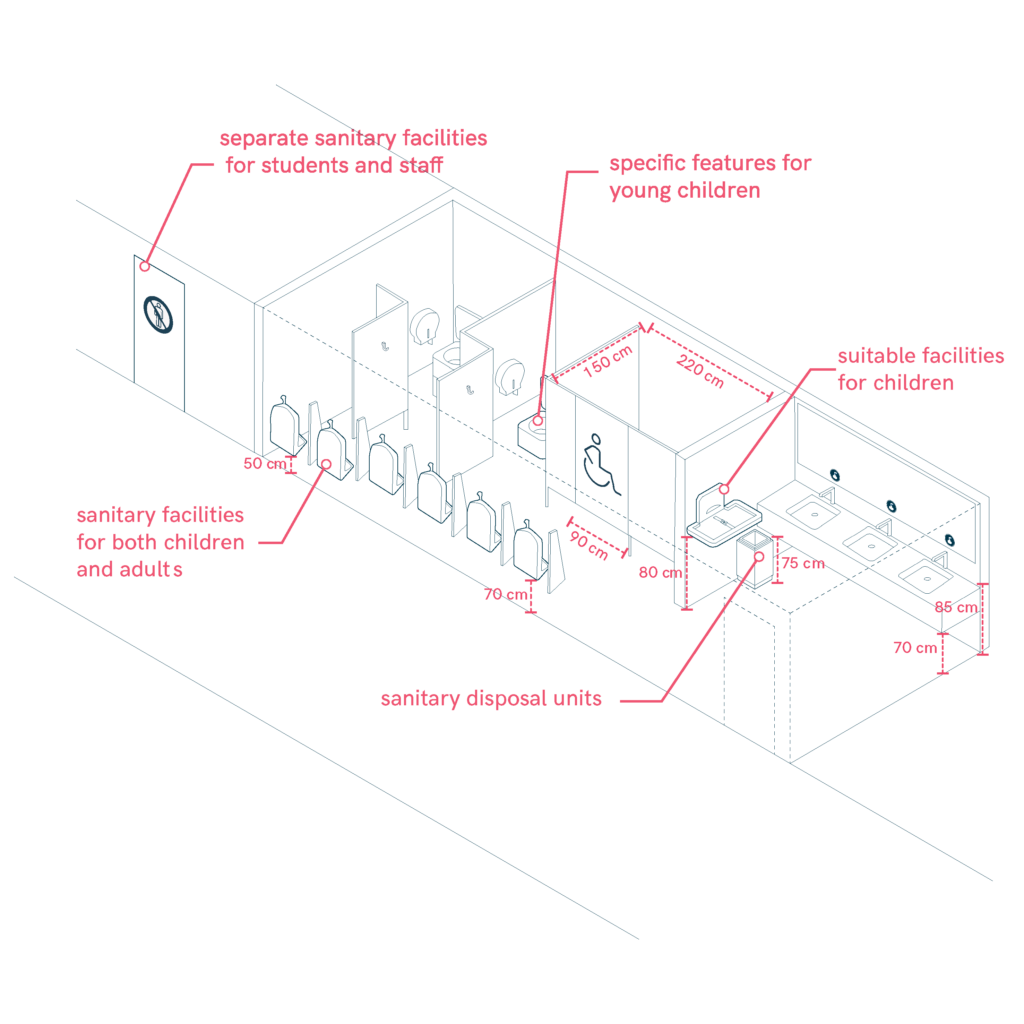Sanitary Facilities and Restrooms
Providing accessible toilets is essential to ensuring the comfort, safety, and dignity of all users, including those with mobility challenges or specific health needs. Well-designed sanitary facilities not only improve accessibility for people with disabilities but also create a more inclusive experience for all users, regardless of their physical condition or age. Ensuring that toilets are equipped with features that accommodate children, adults, and individuals with special requirements is crucial for fostering a safe and accessible environment. Furthermore, the layout and design of sanitary facilities should cater to different life stages, from young children to adults, so that everyone can use these spaces with ease.

- Provide separate sanitary facilities for students and staff.
- Ensure an appropriate ratio of WCs to urinals (1 WC for every 2 urinals).
- Include specific features for young children in nurseries and primary schools, such as lower toilets.
- Provide sanitary disposal units in girls’ toilets from the age of eight.
- Adapt sanitary facilities for both children and adults in shared spaces.
- Ensure children’s WCs are appropriately sized and include smaller seat options.
- Consider the provision of suitable facilities for children in other buildings dedicated to their use, such as museums or play centres.
- Consult here more about toilets according to the spatial characteristics and users needs.
Sources
- https://accessible-eu-centre.ec.europa.eu/content-corner/digital-library/en-172102021-accessibility-and-usability-built-environment-functional-requirements_en
- https://www.miteco.gob.es/fr/ceneam/recursos/materiales/guia-diseno-entornos-escolares.html
- https://www.codigotecnico.org/pdf/Documentos/SUA/DccSUA.pdf
- https://www.cocemfe.es/wp-content/uploads/2020/02/Guia-basica-accesibilidad-centros-educativos.pdf
- https://www.oficinadeaccesibilidaduniversal.es/doc/educativa/centros-educativos/Accesibilidad%20cognitiva%20en%20centros%20educativos.pdf
- https://afaunamuno.org/wp-content/uploads/2023/02/Criterios-Intervencion-EE-30Mar_22.pdf
